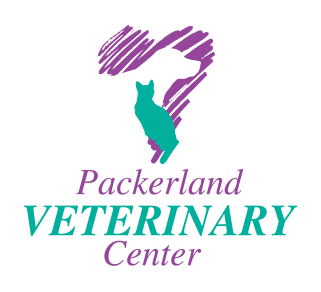


ASK US
Choosing Pet Food
 The pet food industry has boomed in the past several years and it is getting increasingly difficult to sort through the plethora of options to decide what food may be best for Fido. The good news is that there are a lot of great choices available; the not so good news is that no one food is the perfect fit for everyone. We get asked all the time what food is the best and, unfortunately, there is no one answer to this question. If you have a question about the nutritional needs of your pet PLEASE ask your veterinarian!! Their education is far more valuable than the internet or the information the staff at the local pet food store just heard from the most recent visit from a food rep!!
The pet food industry has boomed in the past several years and it is getting increasingly difficult to sort through the plethora of options to decide what food may be best for Fido. The good news is that there are a lot of great choices available; the not so good news is that no one food is the perfect fit for everyone. We get asked all the time what food is the best and, unfortunately, there is no one answer to this question. If you have a question about the nutritional needs of your pet PLEASE ask your veterinarian!! Their education is far more valuable than the internet or the information the staff at the local pet food store just heard from the most recent visit from a food rep!!
What to avoid
Anything with a cutesy name. We ask everyone who comes into the clinic what food they are feeding. We have formed opinions on many brands based upon the overall health and condition of the pets we see that eat the foods daily. Foods with cutesy names, particularly cat foods, have some not-so-great trends of urinary issues. Does that mean every cat on a "cutesy" named food has an issue - absolutely not. But it's a trend. The other thing to avoid is the cheapest foods. To some extent, and mainly on the lower end of things, you get what you pay for. If it costs $15 for a 50 pound bag of food, it is probably like feeding your dog Cheeto's. Yummy, but not great nutrition. Pets on these foods often have poor coat quality and will generate a lot more stool due to the lower quality ingredients used.
What to look for
The most basic thing to look for is the AAFCO (the Association of American Feed Control Officials) statement on the bag. This is a minimum requirement, but does not ensure actual quality of the food itself. The AAFCO statement will also provide some other helpful information. It will reveal whether a food is for "all life stages" or formulated for a more specific age group. All life stage food is formulated to encompass ALL of AAFCO's nutritional requirements found in puppies, adults and seniors into one food. Since it is unlikely that a senior dog would need the same amount of proteins and fats as a growing puppy, it is generally beneficial to choose a food that is formulated for the specific age of your pet. It will also state whether the food has been developed using either a recipe or using actual food trials. Most people would rather feed a food that was actually fed to pets, rather than simply utilizing a recipe. Food trials can help ensure that pets did well and stayed healthy on the food prior to it hitting the store shelves.
Beware of marketing!
As we all are becoming increasingly aware of the health benefits and risks of our own food, we are looking towards feeding our pets in a healthier manner as well. This is a wonderful push with great benefits, but it has also brought out some weaknesses in the pet food industry. Unfortunately there is a lot less regulation of pet foods than there probably should be. Companies are now pushing terms that we are looking for in the human food industry onto the bags of pet foods to make them more marketable. Unfortunately, the vast majority of these terms mean nothing in the grand scheme of things as there is no one regulating whether the food is truly "human grade" or "holistic" or "premium". The term "organic" does have to meet standards, but as you know in human food, organic doesn't always equal healthy. The most expensive food on the shelf is not always the best.
There is also a push for grain-free formulas. While gluten intolerance has become a hot topic in human medicine, we have found that only a tiny percentage of dogs and cats actually have the same issue. By far the most common allergens are protein sources with grains being much further down the list. "Grain free" does NOT mean better. If you want to pay the premium for the "grain free" food and your pet is doing great on it, by all means go ahead. But that doesn't inherently make that food better.
Words like corn and by-products are also being vilified all over the internet. No, they don't sound amazing, but there are some actual nutritional benefits to these things. Byproducts are not ground up beaks, feathers, tumors and whatever other nasty leftover part you can think of. They are less used parts, true, but typically consist of highly digestible organ meat which the human industry uses a great deal less of. Plus, when animals in the wild eat their prey, the organs are the first things they will choose to eat. Do you have to avoid these terms completely? Probably not, but you want them to be further down the list of ingredients rather than in the first few. Ingredients are listed by weight, so look for actual meat as the first ingredient and observe what the contents are from there.
Bottom Line
When it comes to pet foods, the most important question is how the individual pet actually does on the food. Most pets do great on commercially prepared, high quality pet foods. Occasionally a pet will need a more specific prescription formula to help treat or manage a problem. The results we see from these foods prove that food makes a difference. We do not recommend home cooking exclusively as it is extremely difficult to meet the specific nutritional needs of a pet by doing so. If you would prefer to home cook, we highly recommend consulting a veterinary nutritionist who can help formulate a recipe specific to your pet’s needs. And due to the health hazards that exist, we agree with the AVMA and do not recommend feeding raw diet. While there may be some benefit to feeding raw, there are no studies to suggest that the benefit of raw outweighs the potential health hazards for both human and pets alike. Our domesticated dogs and cats have evolved far from their wild ancestors and do not require this type of diet.
When choosing a food, look at the brand itself. Do they spend millions of dollars in research or millions in marketing? Granted, any brand is going to want to sell you food, but take what you hear with a grain of salt and some common sense. Brands that have been around for years haven't gotten to this point with the sole purpose of deceiving the public and promoting complete garbage that kills your pets. They are not all bad. And no, veterinarians do not get paid to promote a particular food. The only people getting rich are the actual food companies, not us!
If you have concerns; ask questions, call the companies. Do they manufacture the food in their own facilities, giving them far more control over the end product, or do they outsource the job out to larger facilities that can process in bulk? As we've seen in the news lately, when they outsource, claims they are making on their packaging may become untrue as they don't always know what they are actually getting. Where do they get their ingredients from? Are they sourced from the US or do they come from other countries where regulations are not as stringent? Unfortunately, just like in human food, recalls happen. Find out if recalls are a trend. Don't look for lawsuits, look for specific FDA actions and what may or may not have been done to correct the situations.
Talk to your veterinarian. They are a wonderful resource with the best interest of your pet in mind. Sure, they don't know everything, but you are bound to get a more intelligent and knowledgeable answer than the teenager at the pet food store!



